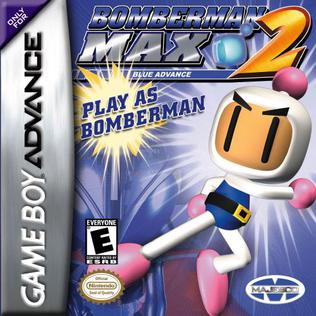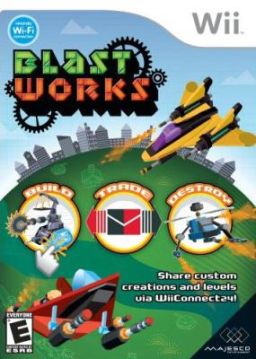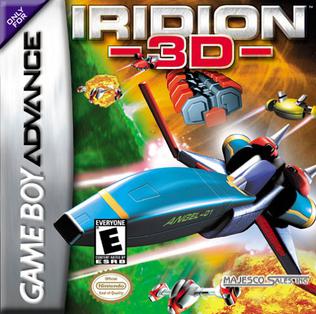Related Research Articles

Tom Clancy's Rainbow Six is a 1998 tactical shooter video game developed and published by Red Storm Entertainment for Microsoft Windows, with later ports for the Nintendo 64, PlayStation, Mac OS, Game Boy Color, and Dreamcast. It is the first installment in the Rainbow Six series. Based on the Tom Clancy novel of the same name, the game follows Rainbow, a top secret international counterterrorist organization, and the conspiracy they unravel as they handle a seemingly random spike in terrorism.

Kirby is the titular character and protagonist of the Kirby series of video games developed by HAL Laboratory and published by Nintendo. He first appeared in Kirby's Dream Land (1992), a platform game for the Game Boy. Since then, Kirby has appeared in over 50 games, ranging from action platformers to puzzle, racing, and pinball, and has been featured as a playable character in every installment of the Super Smash Bros. series (1999–present). He has also starred in his own anime and manga series. Since 1999, he has been voiced by Makiko Ohmoto.

A Boy and His Blob: Trouble on Blobolonia is a puzzle-platform game developed by Imagineering and published by Absolute Entertainment for the Nintendo Entertainment System (NES). The video game was released in North America in 1989, in Europe by Nintendo in 1991 and in Japan by Jaleco in 1991. A Boy and His Blob follows an unnamed male protagonist and his shapeshifting blob friend on their adventure to save the planet of Blobolonia from the clutches of an evil emperor.
Game Boy Advance Video is a format for putting full color, full-motion videos onto Game Boy Advance ROM cartridges. These videos are playable using the Game Boy Advance system's screen and sound hardware. They were all published by Majesco Entertainment, except for the Pokémon Game Boy Advance Video cartridges, which were published by Nintendo. Most cartridges were developed by DC Studios, Inc., except for the few labelled "Movie Pak" which were developed by 4Kids Entertainment's subsidiary 4Kids Technology, Inc. The video cartridges are colored white for easy identification and are sold as Game Boy Advance Video Paks; these offer the same 240×160 resolution as standard Game Boy Advance games, except for the Shrek and Shark Tale pack, which is at 112p.

Bomberman Max 2: Blue Advance and Bomberman Max 2: Red Advance are video games released for the Game Boy Advance on 4 June 2002 in North America. The game was preceded by Bomberman Max which was released for the Game Boy Color in May 2000. As with Bomberman Max, there are two versions of Bomberman Max 2: Blue Advance and Red Advance. As in the first, in Blue Advance the playable character is Bomberman and in Red Advance the playable character is Max.

Mega Man Battle Network is a 2001 tactical role-playing game developed by Capcom for the Game Boy Advance (GBA) handheld console. It is the first title of the Mega Man Battle Network series of games. It was originally released in Japan as a GBA launch game on March 21, 2001 and was released later that year in North America and Europe. It was also released via the Wii U Virtual Console in Japan on July 9, 2014, in Europe on July 24, 2014, and in North America on July 31, 2014.

Ultimate Spider-Man is a 2005 action-adventure game based on the Marvel Comics character Spider-Man and the comic book of the same name. The game was published by Activision for the Windows, GameCube, PlayStation 2, Xbox, Nintendo DS, and Game Boy Advance platforms. The PlayStation 2, GameCube and Xbox versions were developed by Treyarch and are drastically different from the handheld versions, which were developed by Vicarious Visions. The Windows version is a port of the home console versions, developed by Beenox. A version for mobile phones was also developed and published by Mforma. A Limited Edition of the game was released for the PlayStation 2, and includes additional content such as a "making of" documentary and an interview with Spider-Man co-creator Stan Lee.

Blast Works: Build, Trade, Destroy is a horizontally scrolling shooter for the Wii based on the Microsoft Windows game Tumiki Fighters created by Kenta Cho. Majesco Entertainment published the game on June 10, 2008 in North America. It was released in Europe as Blast Works: Build, Fuse & Destroy on April 3, 2009.

Digimon Battle Spirit is a fighting video game originally published by Bandai and developed by Dimps for the Japanese-only WonderSwan Color handheld system under the name Digimon Tamers: Battle Spirit. It was later ported to Nintendo's Game Boy Advance for international releases in North America and Europe two years later.

Iridion 3D is a quasi-3D rail shooter video game developed by Shin'en Multimedia. A launch title for the Game Boy Advance portable game console, it was released in North America on June 11, 2001 and in Europe on September 21. The player controls a single starship defending Earth from the alien Iridion. The game spans seven levels from Earth to the aliens' home planet, each following a linear path that culminate with a boss.

Extreme PaintBrawl is a paintball video game released for DOS/Windows on October 20, 1998. The game is considered to be one of the worst video games ever made. Extreme PaintBrawl was developed in two weeks using the Build engine; its soundtrack was composed by musician Todd Duane, who sent his demo tracks to Head Games. The game was followed by Extreme PaintBrawl 2 in 1999, Ultimate PaintBrawl 3 in 2000, and Extreme PaintBrawl 4 in 2002, all of which were met with negative reviews.

Commander Keen is a side-scrolling platform video game developed by David A. Palmer Productions and published by Activision in June 2001 for the Game Boy Color. Part of the Commander Keen series, it was released ten years after the first seven episodes in 1990–91. The game follows the titular Commander Keen, an eight-year-old child genius, as he journeys through three alien worlds to collect three plasma crystals to prevent the weapon they power, built by several enemies from previous games, from destroying the universe. The game features Keen running, jumping, and shooting through various levels while opposed by aliens, robots, and other hazards.

A Boy and His Blob is a puzzle-platform game developed by WayForward Technologies and published by Majesco Entertainment. It is a re-imagining of the 1989 video game, A Boy and His Blob: Trouble on Blobolonia, which was originally developed by Imagineering for the NES. The game was released for the Wii in North America on October 13 and in Europe on November 6, 2009. A high-definition port of the game developed by Abstraction Games was released on Xbox One, PlayStation 4, PlayStation Vita, Microsoft Windows, OS X, and Linux on January 20, 2016. A PlayStation 3 version was made available on June 28 of the same year as a cross-purchase with the PS4 and Vita versions. Mobile ports for iOS and Android were later released worldwide on November 17 and September 26 of 2017 respectively. A Nintendo Switch version was released on November 4, 2021 by WayForward and Ziggurat Interactive.

Star Trek: Voyager – Elite Force is a first-person shooter video game developed by Raven Software and published by Activision. The game was originally released on September 15, 2000 for Windows and Mac OS. A port for Mac OS developed by Westlake Interactive and published by Aspyr Media was released on November 20, 2002. Elite Force was ported to the PlayStation 2 by Pipe Dream Interactive and published by Majesco Entertainment on December 11, 2001.

Fortress is a tower defense strategy video game developed by Pipe Dream Interactive and published by Majesco Entertainment for the Game Boy Advance (GBA) handheld game console. It originally released in North America in August 2001, and later in PAL regions on November 23, 2001. It was originally announced as Fortris for PlayStation and Dreamcast by developer Prometheau Games, but was acquired by Majesco and moved to the Game Boy Advance. The game has players building and defending their fortress against either another player or a computer using falling blocks to build it up and falling weapons to fight back against opponents.

Majesco Entertainment Company is an American video game publisher and distributor based in Hazlet, New Jersey. The company was founded as Majesco Sales in Edison, New Jersey in 1986, and was a privately held company until acquiring operation-less company ConnectivCorp in a reverse merger takeover, becoming its subsidiary and thus a public company on December 5, 2003. ConnectivCorp later changed its name to Majesco Holdings Inc. on April 13, 2004.
Morning Star Multimedia was an American video game company founded in May 1995 by Dan Kitchen. It was acquired by the Telegen Corporation in 1996 as a wholly owned subsidiary. It was known for releasing Frogger for the Sega Genesis when Majesco rereleased the console in 1998. Its last game was released in 2000, so it is unknown whether it is still in the video game industry today. Employees of the company left to form two gaming studios. Half of them went to the Majesco-led Pipe Dream Interactive, while the other half went to OutLook Entertainment, Inc. which developed three games for Game Boy Advance.

F-18 Thunder Strike is a 2000 action game for the Game Boy Color developed by Morning Star Multimedia and published by Majesco Entertainment. The game is a simplified first-person combat flight simulator in which the player operates a F-18 Hornet for the United States Air Force, who have has confirmed reports of renewed hostile activity in the Balkans and order an aerial assault on the region.
References
- ↑ "GAMEFAQS - Game Boy Color - Ultimate Paintball - Data". Archived from the original on 2016-04-21. Retrieved 2016-07-01.
- ↑ "IGN - Ultimate Paintball - Game Boy Advance - Information". Archived from the original on 2016-08-20. Retrieved 2016-07-01.
- ↑ "IGN - Game Boy Color - Ultimate Paintball Review". 21 June 2000. Archived from the original on 2019-04-09. Retrieved 2015-10-09.
- ↑ "GAMEFAQS - Ultimate Paintball - Game Boy Color - Critic Reviews". Archived from the original on 2016-04-22. Retrieved 2016-07-03.